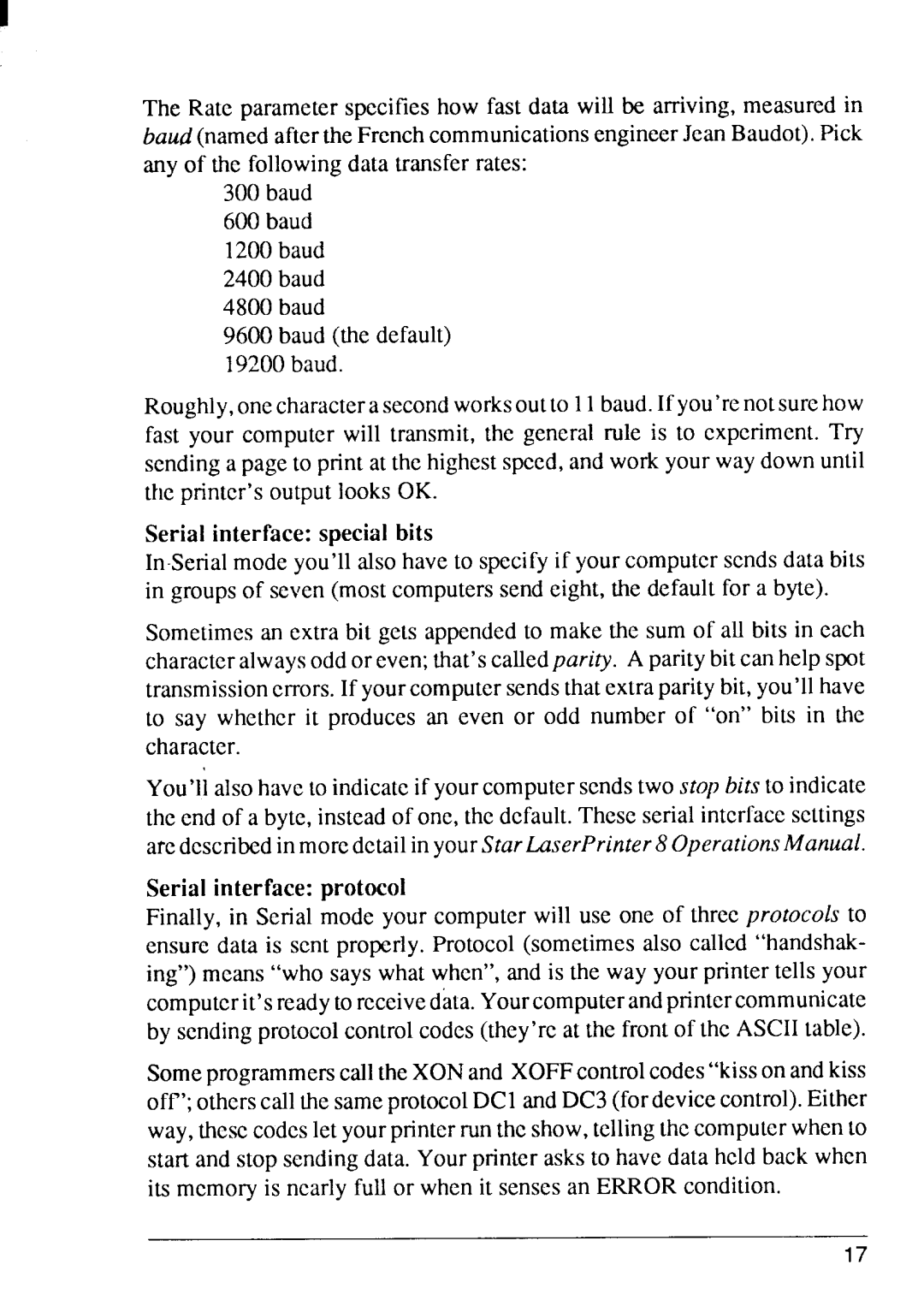
The Rate parameterspecifieshow fast data will be arriving,measuredin baud(namedaftertheFrenchcommunicationsengineerJean Baudot).pick any of the followingdata transferrates:
300baud
600baud
1200baud
2400baud
4800 baud
9600 baud (the default) 19200baud.
Roughly, one character a second worksoutto 11baud.1fyou‘renot sure how fast your computer will transmit, the general rule is to cxpcrimcnt. Try sending a page to print at the highest speed, and work yourwaydownuntil
the pnntcr’s outputlooks OK.
Serial interface: special bits
Somelimesan extra bit gets appendedto make the sum of all bits in each characteralwaysoddor even;that’scalledparity. A paritybitcan helpspot transmissionerrors.If yourcomputersendsthatextraparitybit,you’llhave to say whether it produces an even or odd number of “on” bits in the character.
You’llalsohaveto indicateif yourcomputersendstwo stopbits to indicate the cnd of a byte,insteadof one, the default.Theseserialintcrfaccsettings aredcscnbedin moredetailin yourStarLaserPrinter8 OperationsManual.
Serial interface: protocol
Finally,in Serial mode your computerwill use one of three protocols to
ensure data is sent properly. Protocol (sometimes also called “handshak-
ing”)means“who says what when”,and is the way yourprintertells your computerit’sreadytoreceivedata.Yourcomputerandpnntercommunicate by sendingprotocolcontrolcodes(they’reat the frontof the ASCIItable).
SomeprogrammerscalltheXONand XOFFcontrolcodes“kisson andkiss off’; otherscallthesameprotocolDC1andDC3(fordevicecontrol).Either way,thesecodeslet yourprinterrunthe show,tellingthecomputerwhento start and stop sendingdata. Yourprinterasksto havedata held back when its mcmoryis nearlyfull or when it sensesan ERRORcondition.
17
